One of the best ways to end the day is an herbal tea bath. If you've never tried a tea bath, it's basically soaking in water infused with natural ingredients that are healing for the body and mind.
This therapeutic treat, also known as herbal bath tea, is a unique blend of herbs, flowers, and essential oils. Together these elements create a rejuvenating, spa-like experience that uplifts the senses.
Since ancient times, people have used aromatic botanicals, such as essential oils and other natural compounds to enhance their psychological and physical health. Herbal tea baths have many benefits for both the body and the mind, from elevating mood, reducing stress, and promoting relaxation to beautifying the skin and reducing inflammation.
Here’s a primer on the history of this plant-based healing practice, a round-up of popular ingredients for bath tea, and our favorite recipes and tutorials for making herbal bath teas at home.
Pro-Tip: A similar experience can be achieved by adding the herbs and oils to a corner of the shower, and then letting the warm water disperse aromatic molecules throughout the room.
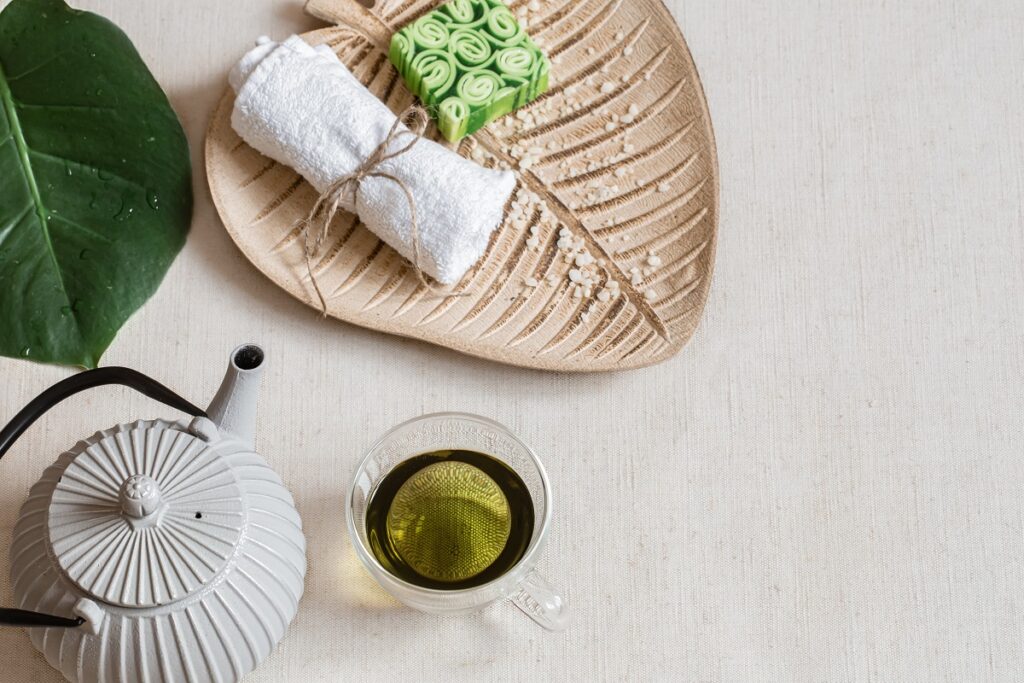
Jump to:
🍵 What Is Bath Tea?
Herbal tea baths are also known as bath teas or tub teas. They’re tea sachets containing some combination of salt, oats, herbs, essential oils, and dried flowers. The sachets are then steeped and the liquid is poured into a warm bath, a practice stemming from traditional aromatherapy.
These natural substances are known to have health benefits, employed over the millennia as medicine, bath aromatics, perfume, and even cosmetics. Aromatherapy is a traditional organic healing treatment that uses aromatic materials, such as natural plant extracts, to promote health and well-being.
Ancient cultures in China, India, Egypt, Greece (Babylon), and elsewhere incorporated aromatic plant components for rituals and healing purposes. These were typically in the form of resins, balms, and oils, extracted by steeping or pressing them form the plants.
The use of pure natural oils in Egyptian ceremonies was significant; they were used as offerings to the gods or to purify the air. Plant ingredients - fruit, leaves, juice, roots, or oils were turned into pastes or salves to be used as cosmetics.
Cleopatra, the Egyptian queen, was said to have bathed in water full of rose petals. In 2500 BC, the Ancient Chinese developed a system of therapy that included herbal cures, shiatsu massage, and medical procedures like acupuncture.
In India, some 2000 years BC various writings mention “perfumers” and “incense sellers.” The Vedas document over 700 plants and natural ingredients used for both religious and medicinal purposes.
In 400 BC, the father of modern medicine, the Greek Hippocrates, advocated the use of natural plant ingredients for therapeutic purposes. He states in his writings that "the key to health is to have an aromatic bath and scented massage every day,” and advised the use of fragrant incense and hot wraps to treat certain ailments.
Different Mediterranean and Near Eastern countries, as well as Western Europe later on, used fragrant herbal baths extensively for medical purposes well into the Middle Ages.
During the Persian civilization, around 1000 AD, the great physician known as Avicenna in Europe—invented a pipe that steam-distilled plants to produce actual essential oils rather than fragrant water as in the past.
The popularity and benefits of herbal baths developed continuously through the 19th century, when medicinal herbs became part of mainstream medicine. Sadly, its popularity was also perverted by charlatans looking to make some easy money casting a shadow over the benefits of herbal medicine.
These days we’d refer to these people as ‘snake oil salesmen.’ Thankfully, modern interest in all things pure and natural like aromatherapy is resurging throughout the world with more natural products being created for therapeutic, cosmetic, and aromatic benefits.
Herbal teas in baths fall under the category of aromatherapy. It's become fundamental for alternative and holistic medicine, and as a leisurely way to relax the body and free it from stress. This form of phytotherapy or plant-based healing is used around the world to improve well-being and alleviate illnesses.
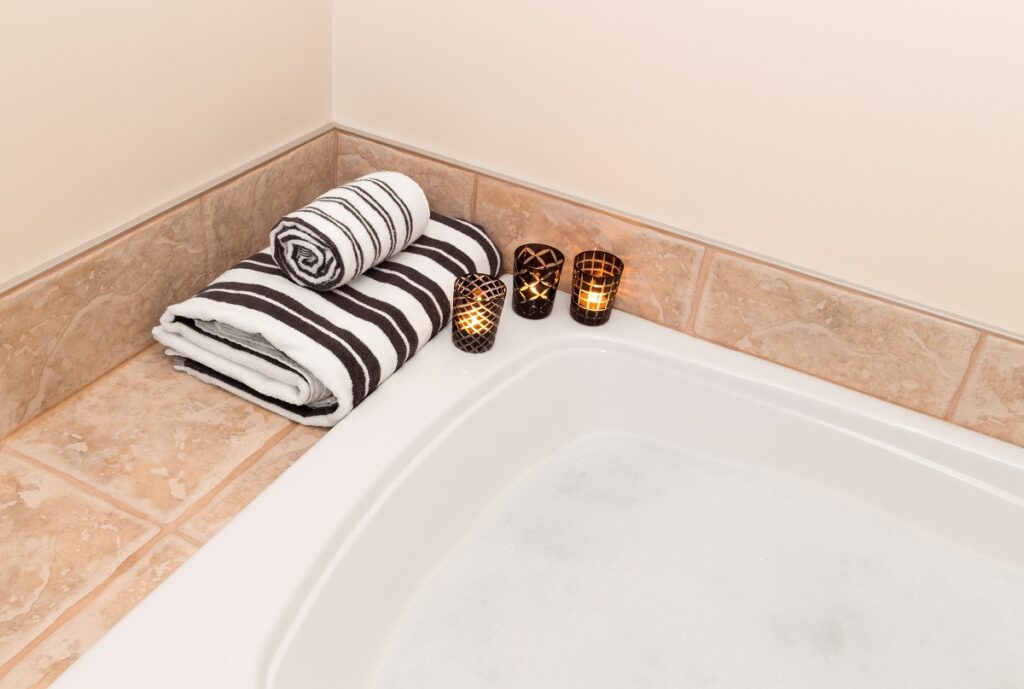
🍃 Benefits of Bath Teas
Using herbal tea in bath water infuses it with a whole host of nutrients. Like when drinking tea, these nutrients can swiftly be absorbed through the skin. Herbal bath teas have many skin-friendly properties when absorbed by the body, just as they do when consumed directly.
Drinking green tea contains bioactive compounds that promote anti-aging, increase fat-burning, and reduce muscle pain. In the same way, if you can't drink green tea, soaking in an herbal green tea bath introduces antioxidants into your system to reap these wonderful effects another way.
Tea baths have also been known to have healing powers for the mind and body. They can remedy several ailments, from acne to the pain of chronic inflammatory conditions. While results vary depending on your chosen ingredients, here are some of the benefits of bathing in herbal bath teas:
- Promotes relaxation, aiding in uplifting your spirits, stress relief, and better sleep.
- Detoxifies the skin and boosts the renewal of your skin's cells. It helps balance and brighten your skin.
- Helps relieve the skin from itchy disorders like psoriasis and acne.
- Antioxidants in the tea and herbs reduce inflammation. Since inflammation is your body’s response to injury or stress, calming the body eases symptoms and promotes natural healing.
- Tea baths can also help increase circulation and relax your muscles, improving muscle tension and pain.
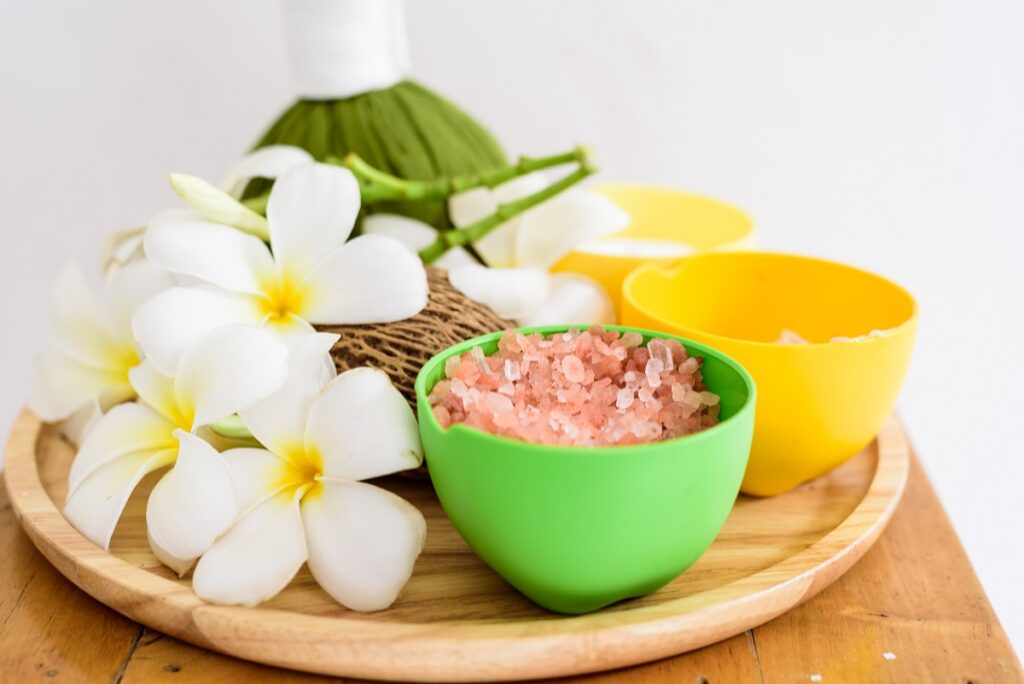
🌺 Common Ingredients in Bath Teas
These organic ingredients are known to have positive effects on the body and the mind. Aside from that, adding these components to your bath will leave you with silky, smooth skin and a much-needed calming scent at the end of a long day.
No matter what is in a bath tea, it will appear beautiful inside its sachets, though the varying contents will have different impacts on the tea's possible health benefits. Salt, oatmeal, dried herbs and flowers, and essential oils are only a few of the amazing ingredients you can put in bath tea.
Salt
Salt is an amazing ingredient for the ultimate relaxing experience. When adding salt to bath tea, grind it fine, because you don’t want any of the rocky pieces undissolved in the bath with you.
By boosting the water's mineral content with salts, you can expose your body to herbal bath tea’s natural benefits, including electrolytes that are normally depleted by our daily stressors.
You can actually use Epsom salt or Himalayan pink salt. Epsom salt is a classic bath and detox ingredient, and anecdotally is said to allow minerals to draw out toxins from the body. Adding a cup or two to a full, warm bath and soak relaxes your muscles and soothes pain from the magnesium it contains.
Himalayan pink salt has long been valued for its calming, emollient, and restorative qualities. It eases stress and may even be able to help manage the symptoms of arthritis.
Chamomile Flowers
Dried flowers give a fragrant and artistic touch to bath teas. These tiny, pretty flowers have yellow centers and white petals. They’re sweet-smelling with an herby aroma, and commonly enjoyed as tea.
We often think of chamomile as a relaxing and calming tea, so a soak in chamomile-infused waters has calming and healing powers to boost immunity and help you fall asleep at night. It also has a soothing effect on the skin, helps minimize redness, scars, and marks, and has antibacterial properties.
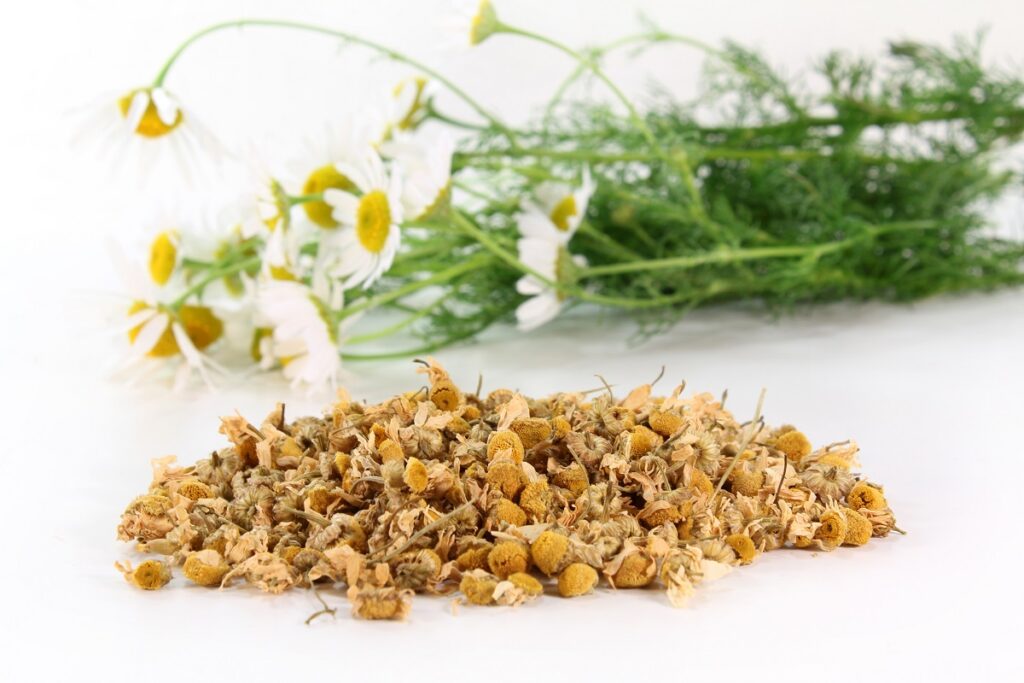
Oatmeal
Oatmeal is a popular ingredient for natural self-care. The rich and hydrating nature of oats works as an organic skin conditioner. It works wonders for dry skin and soothes other skin conditions such as poison ivy and general itchiness.
A calming whole grain with anti-inflammatory properties, oatmeal eases dry, irritated, and sensitive skin. Taking an oatmeal bath in warm water with an herbal bath tea blend can help soothe cracked skin. Lock in that moisture with your favorite body cream after drying off.
Rose Petals and Rose Essential Oil
Another flower that is amazing for your tea tub time is the rose.
Rose petals have long since been revered as a luxury; ancient Egyptian royalty is said to have bathed in water filled with rose petals. It elevates the bathing experience not just with its luxuriousness but also with its aesthetically pleasing colors, softness, and delightful floral fragrance.
These pretty and fragrant flowers have been used in herbal medicine for centuries and are full of healthful properties. Roses have physiological and psychological relaxation, antimicrobial, analgesic, anti-inflammatory, and anti-anxiety effects.
Rose essential oil and all other essential oils are very highly concentrated. Essential oils are chemical compounds found in the bark, leaves, flowers, roots, and rinds of plants, fruit, and trees.
These natural plant oils should never be ingested nor heated to high temps, or else it will lead to vaporization and thermal cracking, stripping the oils of their potency. Dilute the oils in salt or carrier oils just before dropping them in the bath.
Diluting them before exposure to heat just before use will preserve their potency while being safe for your skin. Never add drops of essential oils directly to the bath because some essential oils, undiluted in water, can cause burning of the skin or other problems.
Always research the best bath formulas for the essential oils you wish to use, to make sure you're not putting your body at risk in any way.
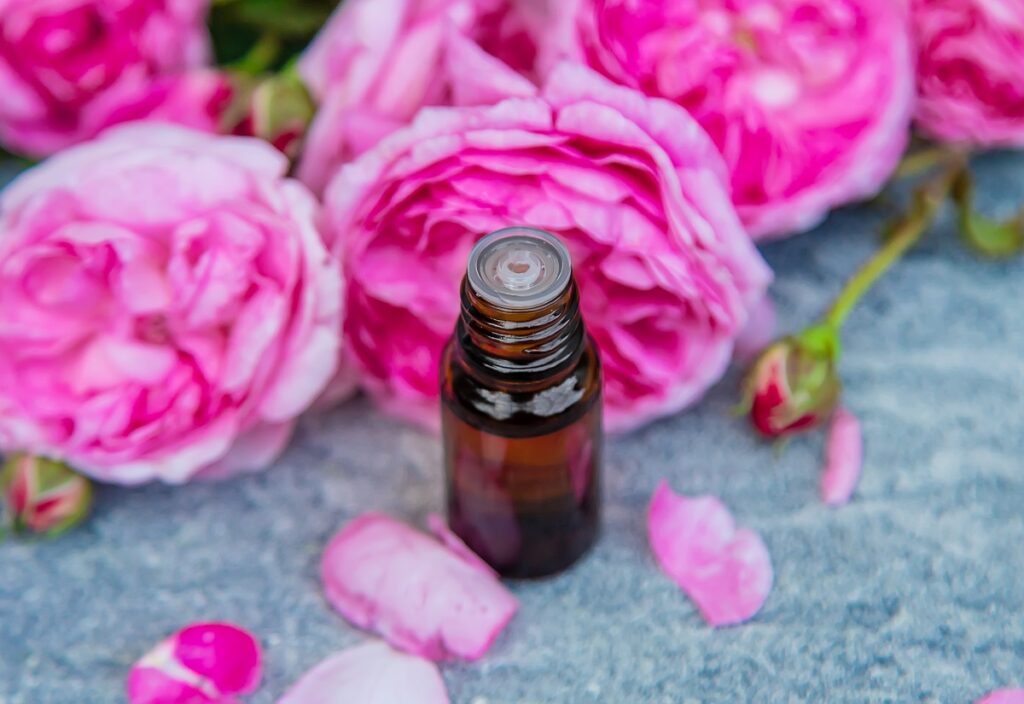
Lavender
Lavender is a perennial plant native to the Mediterranean. This delightful herb has many uses as a flavoring in cooking, as a fragrance in cosmetics, skincare, perfumes, and as aromatherapy. It has tiny, beautiful purple flowers and a breathtaking aroma.
As a bath tea ingredient, lavender flowers may give you a mental pick-me-up. It's simple to breathe in the scent of lavender thanks to the steam from a hot bath; the pleasurable scent alone may help you relax and boost your mood.
Research also suggests that lavender has many other health benefits. It can help you sleep better, feel less anxious, and promotes relaxation. It also has natural antibacterial characteristics that encourage good hygiene.
Peppermint Leaves and Peppermint Oil
Like any other herb you’d use in herbal tea to drink, peppermint can be used for a bath tea. Peppermint is a cross between two types of mint: spearmint and watermint. Cultivated around the world, peppermint is used to add flavor or fragrance to foods, cosmetics, soaps, toothpaste, mouthwashes, and other products.
Peppermint has some wonderful medicinal uses. It's a popular traditional remedy for a number of conditions such as nausea, muscle pain, colds, and flatulence (gas). Peppermint oil even may be able to calm the stomach of GERD symptoms and IBS. It's also widely used for calming skin irritation and itchiness.
You use dried or fresh peppermint (Mentha piperita) leaves to brew tea or get a good quality peppermint essential oil. The cool, crisp, fresh smell of peppermint leaves may help improve mental function and alleviate stress.
On the other hand, when using peppermint essential oil or any other oil for that matter, remember that these are super concentrated so a drop goes a long way. While peppermint oil can be used topically, it's always diluted with carrier oil. The same goes for adding it to a bath.
To mix the oil in water, let it be absorbed by your Epsom salt first, then mix both into the bath water well.
Calendula
Calendula or pot marigold is a flower native to northern Mediterranean countries. It is a powerful herb that has a ton of advantages for the skin, including both antibacterial and anti-inflammatory properties.
Calendula encourages wound healing and promotes supple, moisturized, and healthy skin. It also offers defense against free radicals, which can hasten the onset of premature aging through the oxidation process.
This amazing plant can even speed up the healing time of C-section scars. People with sensitive skin should use calendula, which is helpful not just for moisture but for burns, inflammations, bug bites, rashes, and skin conditions.
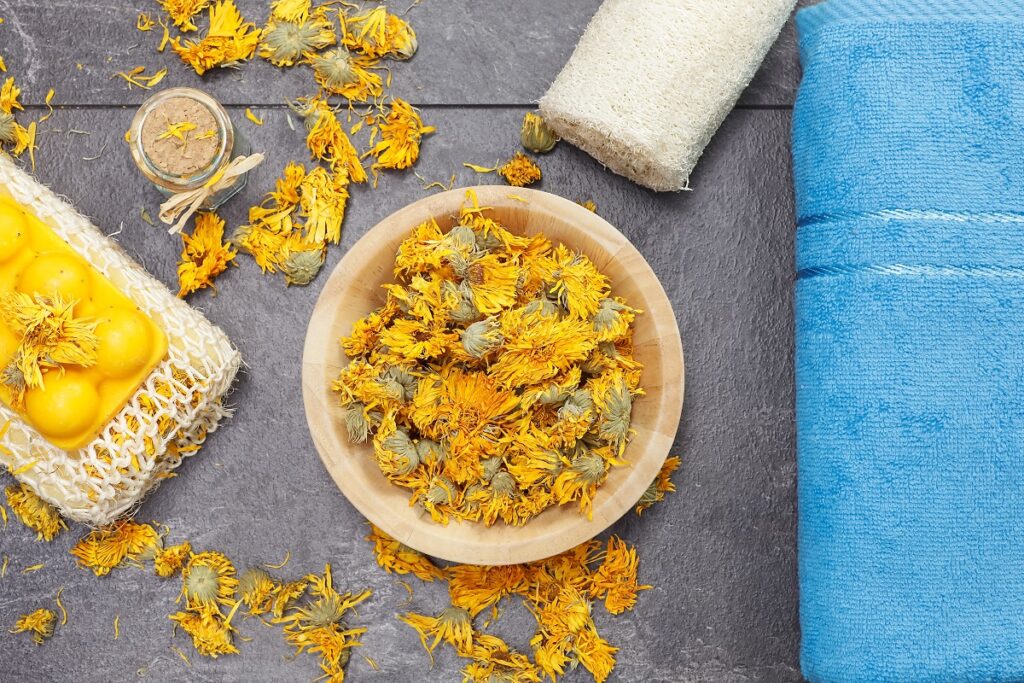
🚿 Preparing to Use Bath Teas
The first step in taking care of yourself is to treat yourself well, which could entail mindfulness practices such as meditation and yoga. Taking a tea-infused bath after a difficult day is is one such practice, and in my experience, can boost your confidence and relieves stress.
These practices coupled with good eating habits and a clean lifestyle subsequently translate into healthier and improved well-being. Imagine soaking in a warm bath filled with aromatic, healing herbs, lighting a few unscented candles, turning on some calming music, and unwinding.
This peaceful haven in which to retreat, think, and re-energize can easily be enhanced with an herbal tea bath in your tub at home. Choose your spa experience from any combination of bath tea ingredients, depending on your mood.
Get ready to reap the benefits of the medicinal compounds held in the herbs, and naturally released by the water. Your mood can be lifted, your mind can be calmed, your painful muscles and joints can be soothed, your pores can be opened, your skin can be made softer, and you can have more restful sleep.
A calming lavender tea bath has a delightful perfume scent coupled with the medicinal qualities of the plants released into the water, offering spiritual therapy, skin therapy, and aromatherapy all in one. To begin your retreat into relaxation and calm, below are some simple steps and guidelines to keep in mind.
If using a pre-made herbal bath tea:
- Take a shower to clean up; nobody wants to sit in the day’s grime.
- Run a warm bath.
- Follow the maker’s instructions on your bag for steeping bath tea.
- Add the herbal tea bag and swirl until saturated with water. Leave the bag in the bath for the botanicals to have the most powerful effect.
- Then simply soak in the goodness for 15-30 minutes at a time. You can take up to an hour, but take breaks and drink water in between. You may ideally soak in an herbal tea bath for 15 to 30 minutes, 2 to 3 times a week
- Don’t forget to wash the bag clean after use because they’re usually reusable. When done, rinse the bag, drain it, and then let it air dry. Don't forget to lotion up afterwards, either!
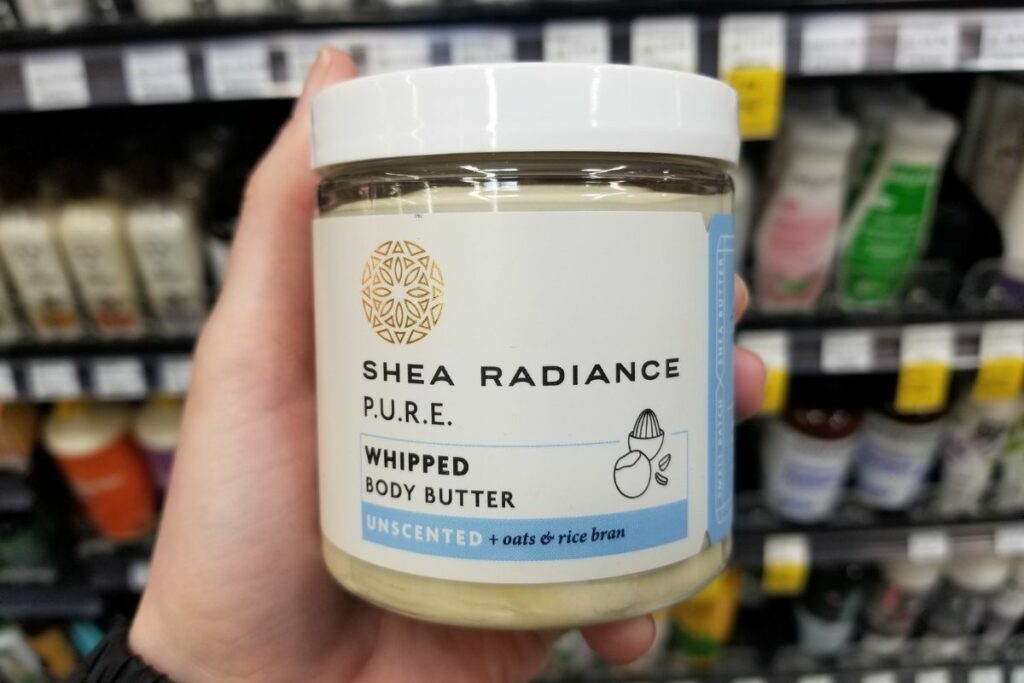
If you’re using a home concoction of leaves, flowers, and tea:
- Bring the water to a boil and pour it over the dried flowers and herbs.
- Cover, and let steep for at least 20 minutes.
- Meanwhile, take a shower to cleanse the day’s grime off of you. There’s no soap meant for cleaning during a herbal bath, as tea tub time is meant to relax the body and reap the benefits from the ingredients.
- Strain the liquid through a tea strainer, cheesecloth, or an old, clean shirt.
- Add the tea directly to a full, warm bath. Remember not to make the water too hot.
- Immerse yourself for 15-30 minutes at a time.
- When you get out of the tub, rinse lightly in the shower or even simply towel off to reap the full rewards of a herbal bath. You can lather on your favorite lotions or creams to lock in moisture.
If you’re using a tincture with essential oils you can follow the steps above. Then add Epsom salt to absorb the essential oils making them disperse in the water faster. One cup of Epsom salts added directly to the bath increases the relaxation properties.
While herbal bath teas are ideal on their own, you can always construct an herbal bath by combining bathing herbs with other fantastic skincare additions, the majority of which are readily available in your kitchen cabinet or home garden.
Before starting a new bathing habit, consult with your doctor. Even someone in good health could start to feel queasy or unwell after taking a bath, especially if your electrolyte levels are low. If this occurs, slowly leave the area, take a break, and refresh yourself by drinking water.
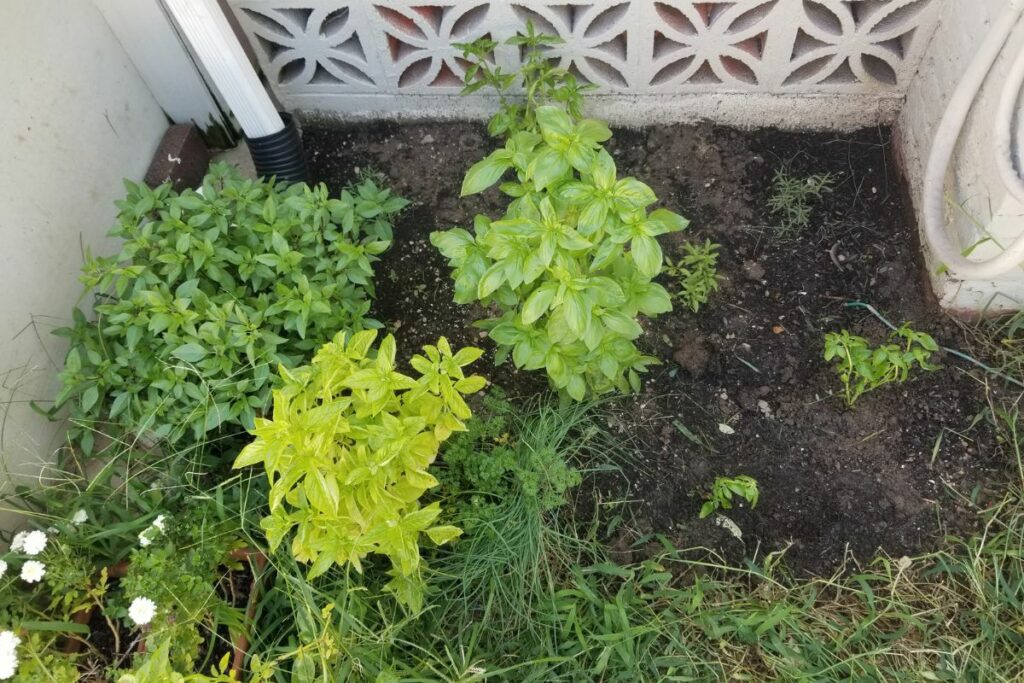
🏠 How to Make Bath Tea at Home (5 Recipes)
Herbal tea blends are luxuriously soothing and good for you. When making your tea at home you can save money, experiment with flavors, and ensure superior quality and affordability.
Craft Pre-Made Tea Bags
Homemade herbal bath tea bags are a simple and sustainable way to relax while taking care of your skin. Add the dry ingredients to a mixing bowl and give them a good stir to combine. Then add the essential oils and place everything into an unbleached tea bag, preferably reusable ones.
Although you can get the same skin nourishment, stress relief, and spa-like scent by simply pouring the ingredients for the bath tea directly into the tub, keeping them in a sachet ensures that your drain won't clog and that your tub will stay clean.
Make an Herbal Tea Bath in a Jar
A warm herbal bath with a variety of fragrances wafting through it is a sensation unlike any other. It's wonderful, so much healthier for your body, and it can help to clear up unpleasant skin conditions.
When you’re an expert soaker, you’ll need a steady supply of the good stuff. So even if you make too large a batch, this also makes for a great hostess gift or give-away to friends. Simply combine all the ingredients and mix well in a bowl. Transfer to an airtight container or mason jar.
When ready to use, boil the water and pour it over the dried herbs. Simply pouring hot water over the herbs and letting them steep will activate all the goodness already present in the botanicals.
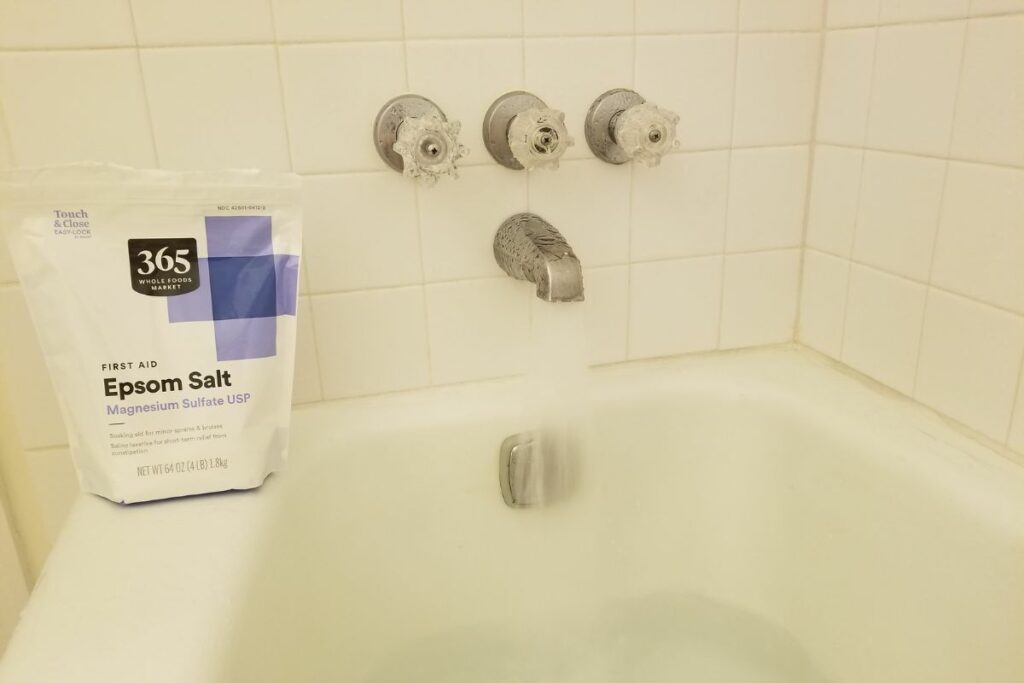
Preparing an Herbal Tea Tincture
Making an herbal bath tea tincture of loose-leaf herbs, dried flowers, and even dried citrus fruit peels is simple. To begin, you only need a few basic ingredients, which you can then customize to your liking.
When preparing a blend made with fresh ingredients (such as grapefruit, oranges, lemons, turmeric, and ginger), make sure to peel away the outer layer only of the citruses, and slice the ginger and turmeric into thin strips.
Place these on a baking sheet or pan and dehydrate or bake until completely dry. Allow them to sit on the counter overnight before chopping them into small pieces and preparing your blend for use the following day.
- Combine your herbs, leaves, stems, and roots in a pot.
- Stir and ensure that the ingredients are combined well.
- Once it is boiling for a few minutes, cover and then simmer for another 10 minutes, or until well steeped.
- After that, strain them through a cheesecloth, or a tea strainer before adding your infused tea liquid to your bath.
- Pour the tea into a full, warm bath.
- Add a cup of Epsom salts directly to the bath for extra relaxation.
- Check the temperature to ensure it is comfortable.
- To reap the full benefits of the bath, soak for at least 15-30 minutes.
Using fresh or dried herbs, fruits, and spices in the kitchen is second nature. Just like in our homemade facial and body lotions, these fragrant ingredients can also be used to make herbal tea bath blends.
Buying essential oils and other ingredients like jasmine and rose oil may be expensive, but remember a few drops go a long way. Find a reputable brand that provides genuine essential oils and not artificial substitutes or poor quality oils.
Many brands are diluted to lower the cost, so make sure to seek out pure essential oils. Also, buying fresh produce and flowers from your local farmers market will ensure that your ingredients are of good quality. Seek small-batch & organic, hand crafted, or artisanal herbs and flowers, when possible.
Drying herbal tea ingredients and creating tea blends at home is cost/efficient and can benefit you even further. Make sure to keep them in airtight containers and a cool, dry area.
Long-term storage in warm or sunny conditions causes oxidation, which degrades the power of the herbs and oils over time, so make small batches that you can consume quickly.
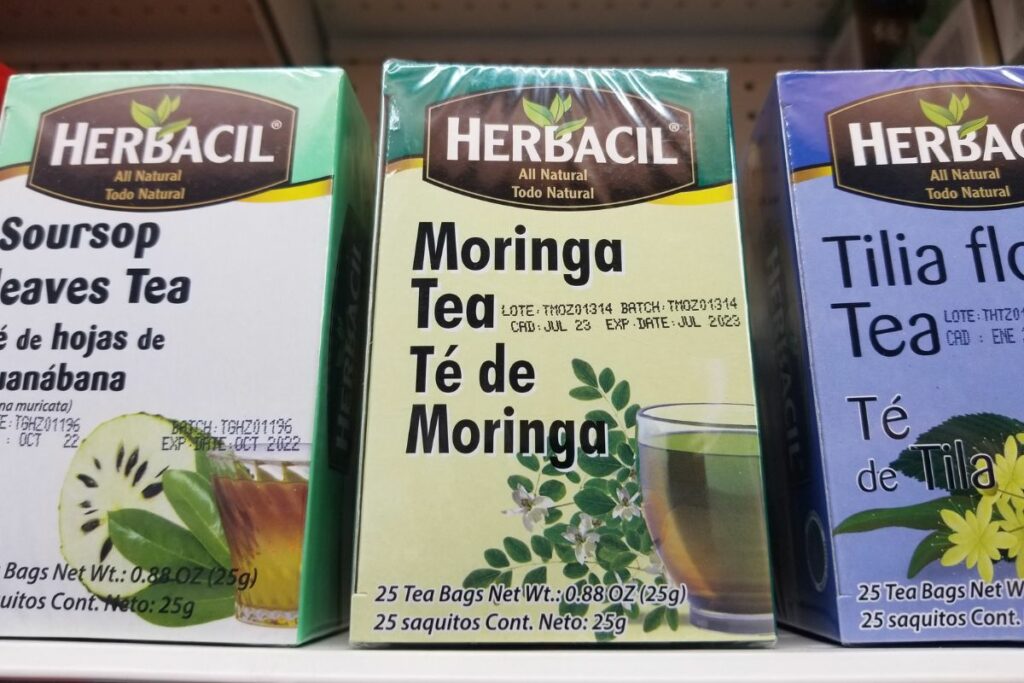
DIY Tea Bath Recipes
Making your own herbal bath tea is superior to anything you buy in a bottle. There are a myriad of bath tea recipes out there, depending on what scents and benefits you’re looking for. Here are some DIY recipes to get you started.
You'll be indulging in flowery pleasure in no time with this premade single-serve, reusable herbal tea bag with only a few straightforward ingredients (as well as some luxurious ones). The ingredients are simply a mix of dried flowers and essential oils like lavender, rose, and chamomile plus Epsom salt.
Allow the scent of this herbal bath tea blend to transport your senses to a field of lavenders. This is a great concoction for dry, sensitive skin because it's made with two skin-friendly ingredients - oatmeal and lavender. It offers gentle, yet stimulating, hydration support for the skin, useful for all skin types!
Melt away the stresses of the day and replenish any mineral deficiencies that may be harming our health and well-being. This anti-inflammatory blend is sure to keep you in good spirits and health while aromatic, soothing scents fill the room.
Do you want to improve your mood, relieve stress, and feel more refreshed? Make an herbal tea bath with peppermint, spearmint, and botanicals. It has a wonderful aroma, is invigorating, and may benefit the respiratory system by relieving congestion and coughing.
Soothing, luxurious, with tranquil scents - everything you want in a bath. This green tea and botanical blend is perfect for any skin type but especially one requiring a little extra nourishment and moisture. It’s the ultimate skin pampering in a sachet.
Aside from consulting with your doctor before taking an herbal tea bath, I recommend you read up on it. There are many interesting facts out there that can help you get started on your journey into wellness.
If you want to learn more about the effects of essential oils on the body and other science-based approaches to describing them, check out this scientific study.

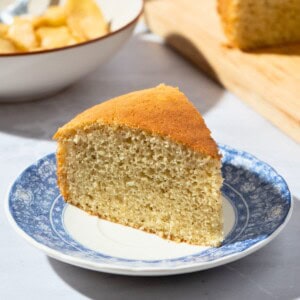













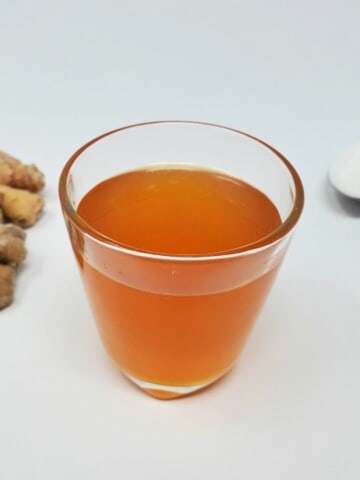

Linda says
Hi Max, can I buy premade sachets for tea baths? Do you have a link to a nice one. I’m a daily bather in Epsom salt nightly. Love soaking. Thanks.
Max says
No links to ones I've tried personally, but I'd check out your local farmer's market or other herbalist-type people - they'd probably have the best reocmmendations for blends, especially if you'd use them regularly!